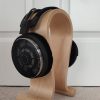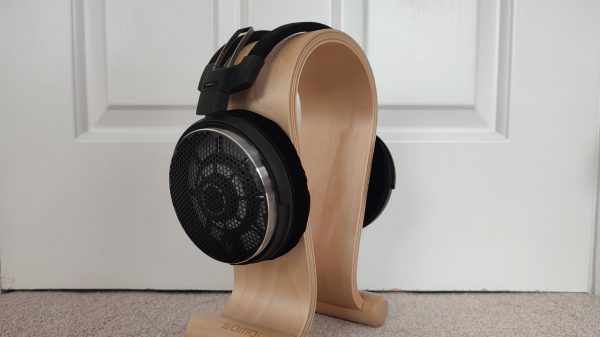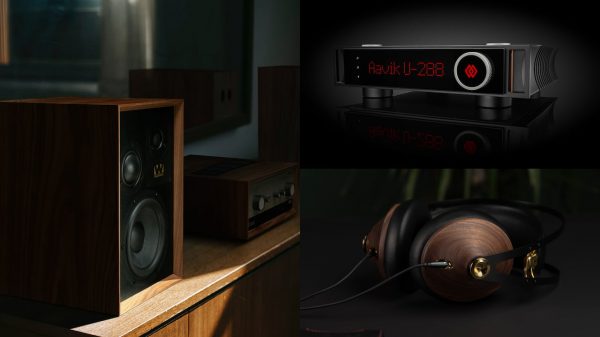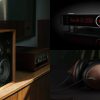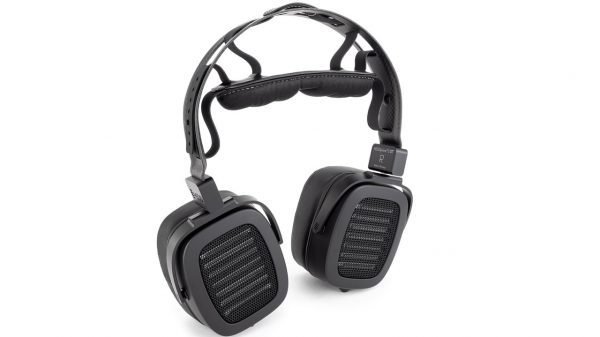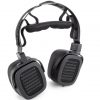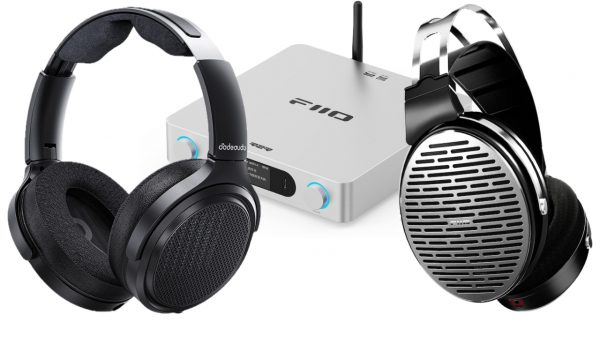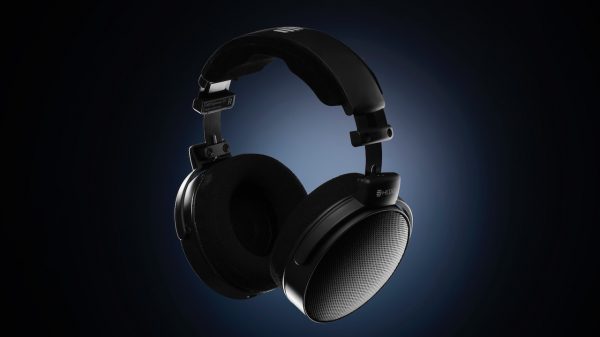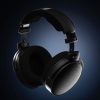Fosi Audio, the Chinese company founded in 2017, has earned a reputation for delivering some of the best bang-for-buck amplifiers and DACs on the market. Their popularity on Amazon has been nothing short of remarkable—but is all that praise warranted? Now, Fosi is aiming to make waves in the full-size headphone market with their all-new i5 open-back planar magnetic headphones.
Priced at $549, the i5 enters a crowded field filled with well-regarded models. eCoustics’ Editor-in-Chief Ian White has a full system under review right now and, true to form, has been tight-lipped about his thoughts.
The big question remains: are the Fosi i5 open-back planar headphones pure magic, or are they deeply flawed?
Fosi Audio i5: Technology, Specs & Key Features
If you visit Fosi Audio’s website, it’s clear how proud they are of the i5—a first foray into full-size headphones after considerable research and development. Each earcup houses a planar-magnetic driver with a double-sided magnet design, intended to improve dynamics and deliver more punch.
The diaphragm measures a substantial 97mm in diameter and is crafted with nanometre-level precision, resulting in an ultra-thin thickness of just two micrometres.
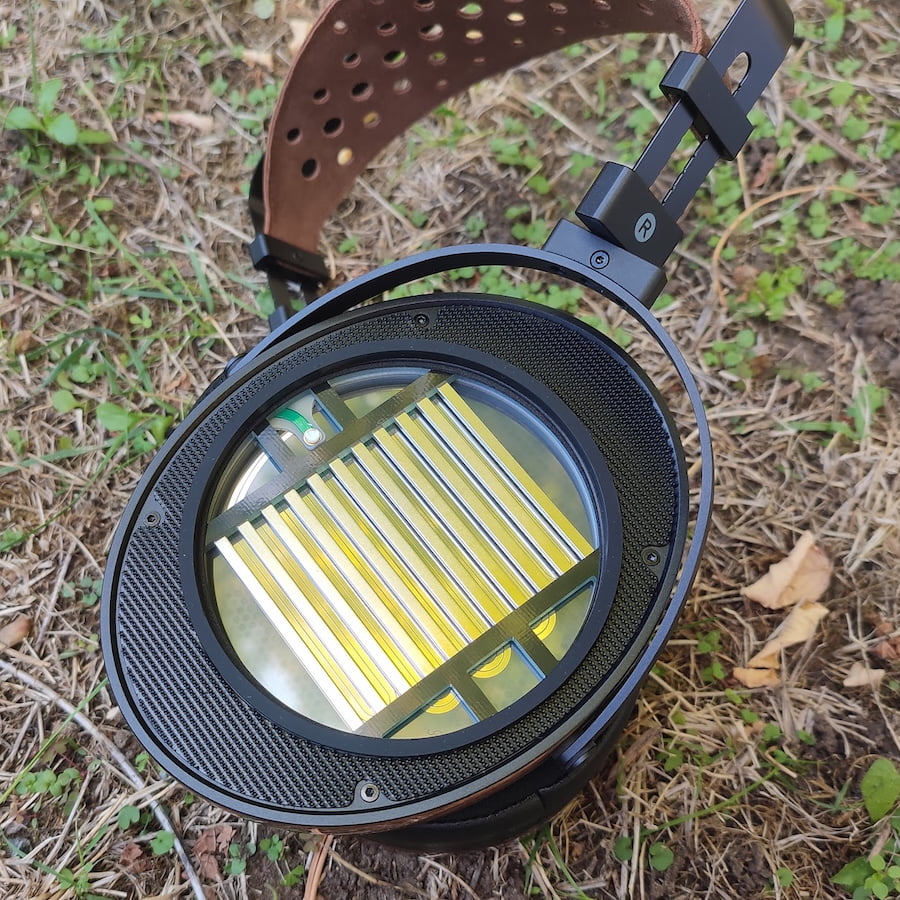
The diaphragm features a 1.3-micrometre-thick silver voice coil, applied using an advanced technique called targeted sputtering. Fosi claim this precise method enhances both the durability and overall performance of the drivers.
Beyond the drivers, Fosi have highlighted the design of the outer grille, which they say minimizes interference with outgoing sound waves while providing stable air-pressure damping for a wider, more open soundstage.
All of this sounds impressive on paper, but whether it actually translates into compelling sound quality will be explored in the listening section of this review.
Fosi Audio i5 Headphones: Design, Build & Comfort
Included in the i5 box are two cables, each stored in its own cloth bag. Both measure roughly 1.5 metres in length: one features a thin fabric sleeve and terminates in a 3.5mm jack (with a quarter-inch adapter), while the other has a thicker sleeve and ends in a balanced 4.4mm Pentaconn connector.
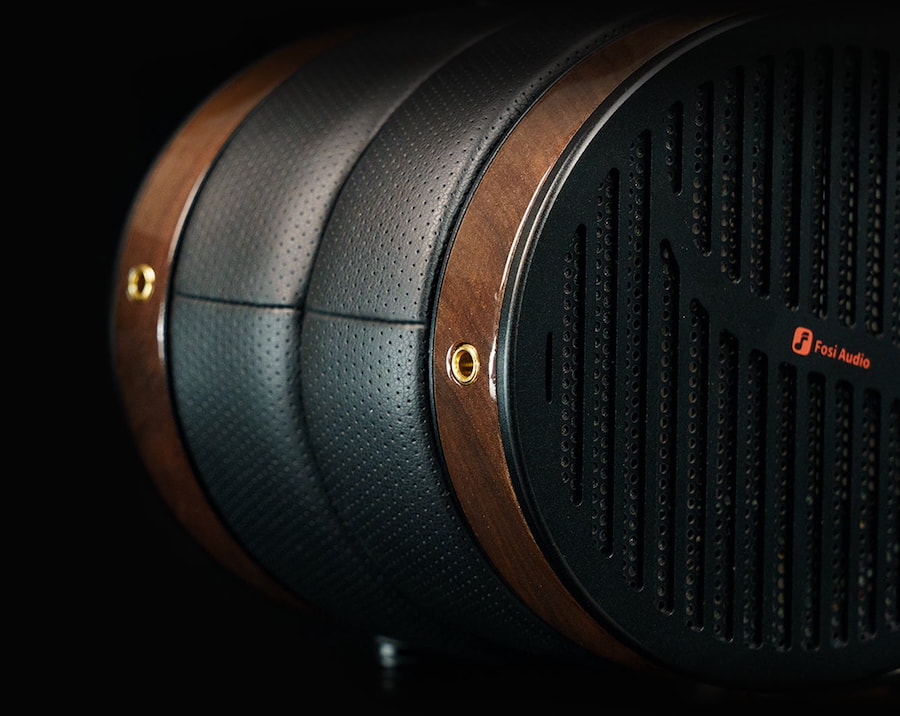
The i5 is built from a mix of high-quality materials. Polished walnut accents the sides of the earcups, and the headband is wrapped in genuine suede. The earpads combine perforated leather with breathable fabric, keeping them comfortable and cool during extended listening sessions.
The main frame is made of aluminium, though the 550-gram weight might make you assume it’s steel—but the weight is well-balanced and not fatiguing on the head.
I tend to be a bit obsessive-compulsive about symmetry, so Fosi’s choice of a stepless headband adjustment system on the i5 doesn’t exactly win me over—though I understand some listeners appreciate the flexibility this design offers.
The earpads are undeniably comfortable, but their thickness makes the i5 appear rather bulky on the head. I’m also not sold on the grille design, which comes across as slightly toy-like to my eyes. Overall, despite the use of premium materials throughout, I’m not particularly fond of the i5’s aesthetics.
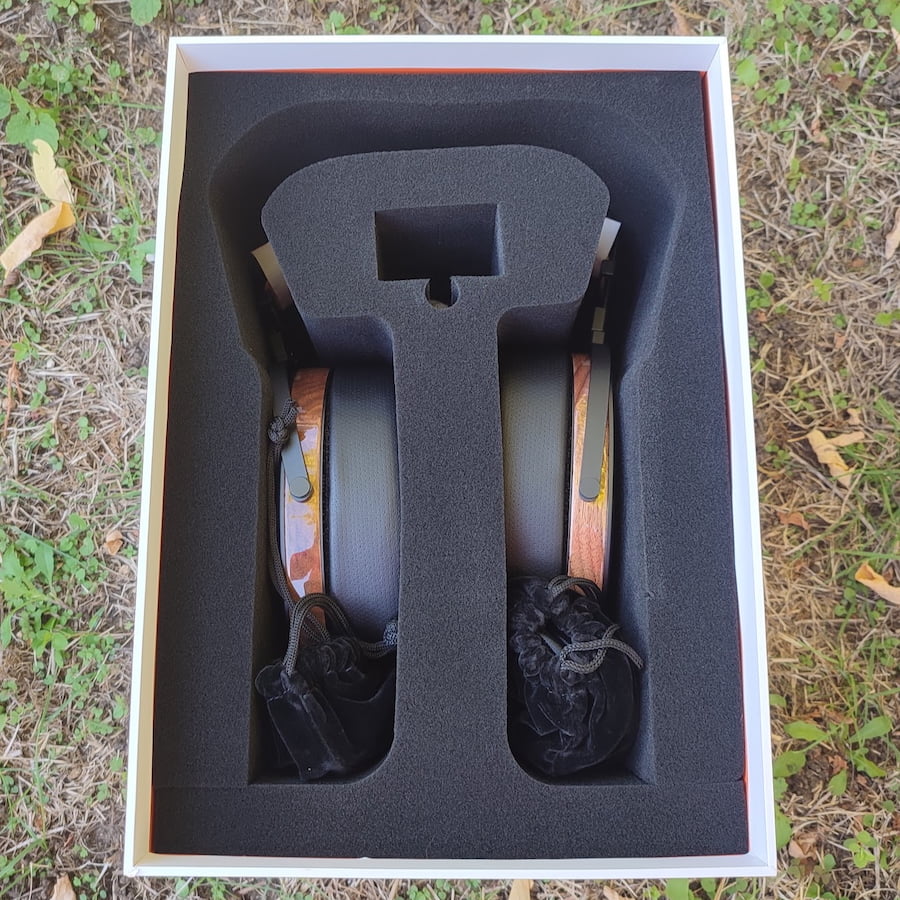
Listening
To evaluate the Fosi Audio i5’s sonic performance, I tested them across a range of source gear—from compact dongle DACs like the FiiO BTR17 to full-size desktop amplifiers and DACs, including the Aune S17 Pro and SMSL DO400.
These were connected to various playback devices, including a PC and smartphone, using both USB and Bluetooth, streaming hi-res FLAC files as well as Spotify. With that setup, here’s what I made of the i5’s sound quality, starting with the bass.
Bass
It’s worth noting that the i5 underwent a significant tweak to its frequency response after its official release in May.
The first batch suffered from a noticeable bass roll-off below roughly 70Hz. Fosi claimed this was a deliberate choice to tighten midbass performance, but they acknowledged that many early buyers weren’t impressed with the low-end. The solution was a simple but effective update: a rubber ring inside the cups to complete the seal.
With the ring in place, the i5’s bass is impressively linear, extending right down to the limits of human hearing. My go-to test for subbass extension is the 20Hz rumble around the three-and-a-half-minute mark of Hans Zimmer and James Newton Howard’s “Why So Serious?” The i5 nails it—you can both hear and feel that note at the threshold of audibility.
The rest of the low end is clean and well-articulated, offering texture and punch without going overboard. Some might describe the tuning as a touch analytical. For listeners who crave extra thump for hip-hop or R&B, something like the Sennheiser HD600 or 6XX might hit the mark better.
Midrange
The i5’s midrange is something of a tale of two halves. The lower mids are perfectly neutral, giving male vocals plenty of body. Charlie Jeer’s “Nobody – Studio Version” sounded particularly satisfying, with both his voice and the sultry saxophone carrying a natural weight and richness.
The upper mids, however, are noticeably recessed. Female vocals in particular can sound distant and lacking presence, as if they’re sitting far back from the microphone. At lower listening volumes—which is my preferred level—this thinness in the upper mids becomes even more apparent, leaving some tracks feeling a little lean.
Treble
The recessed upper mids carry over into the lower treble, affecting the timbre of certain instruments like flutes and trumpets. This contrasts with a noticeable lift in the mid and upper treble, which can make hi-hats and cymbals sound a touch sibilant or over-sharp—something I noticed while listening to L’Impératrice’s “La lune.”
It’s a shame, because the drivers themselves are clearly capable and highly resolving. Detail retrieval is excellent, easily ranking with the best headphones under $1,000. In fact, in my view, the i5 surpasses all iterations of the HiFiMAN Ananda and most Sennheiser models short of the HD800 series.
For listeners willing to play around with EQ, the i5 can truly shine, showcasing technical prowess that’s rare at this price point.
Imaging & Soundstage
The i5 also excels in technical performance when it comes to staging. While the overall soundstage is slightly on the small side, instrument placement and spatial cues are remarkably precise. In other words, the i5 delivers outstanding imaging.
This sense of “coherency” within a compact stage is reminiscent of the Audio-Technica ATH-R70x—and in this case, that’s high praise.
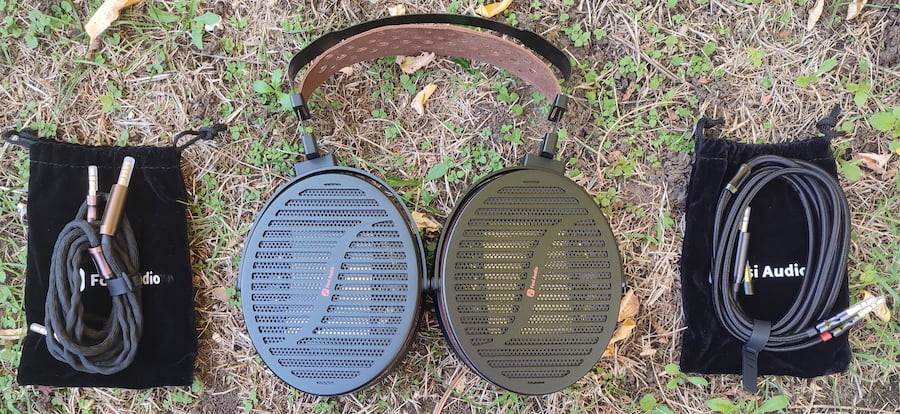
Drivability
With an impedance of 28 Ohms and a sensitivity of 98 dB/mW, the i5 is relatively easy to drive and can reach ear-splitting volumes even on budget-friendly portable DAC/amps. That said, it does scale noticeably with higher-quality amplification.
For instance, moving from the FiiO BTR17 to the K17 from the same brand—a jump that increases power output roughly sixfold—brought stronger dynamics and a fuller, more articulate bass response. This improvement was likely aided by the warmer sound signature of the K17.
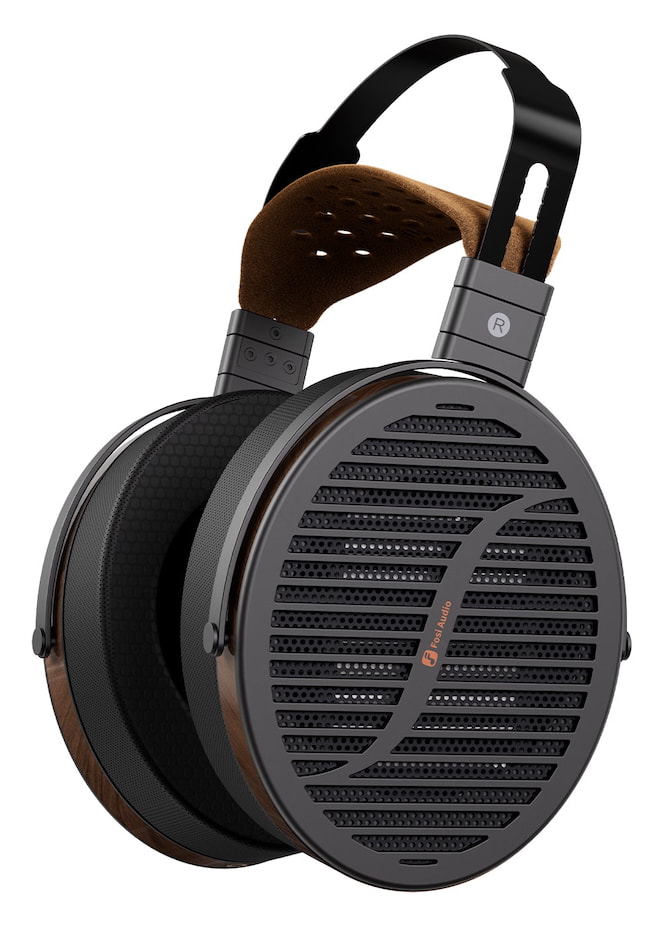
The Bottom Line
The Fosi Audio i5 isn’t perfect—its bulky design and recessed upper mids leave room for improvement—but at $549, it delivers technical performance that rivals or even surpasses many competitors. From precise imaging and excellent detail retrieval to deep, linear bass, the i5 punches well above its price point. Listeners willing to utilise EQ can unlock its full potential, making these open-back planar headphones a serious contender in their class.
Pros:
- Deep, linear bass with excellent extension down to 20Hz
- Neutral and well-articulated lower mids, giving male vocals plenty of body
- Highly resolving drivers with superb detail retrieval for the price
- Precise imaging and coherent soundstage despite a slightly compact size
- Relatively easy to drive; scales well with higher-quality amplification
- Premium build materials: walnut accents, suede headband, hybrid leather/fabric earpads
- EQ-friendly for tuning out minor frequency imbalances
Cons:
- Upper mids recessed, making female vocals distant and thin
- Lower treble lift can cause sibilance on cymbals and hi-hats
- Bulky appearance due to thick earpads and overall weight
- Stepless headband adjustment may not appeal to those who prefer symmetry
- Grille design can look toy-like
- Not a neutral all-rounder; may require EQ for optimal balance
Where to buy:
Related Reading:







